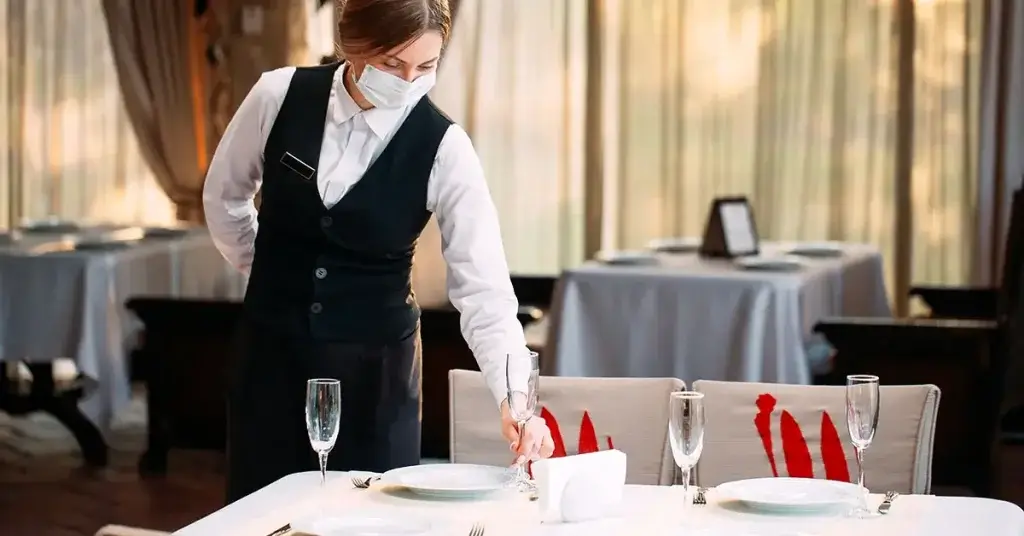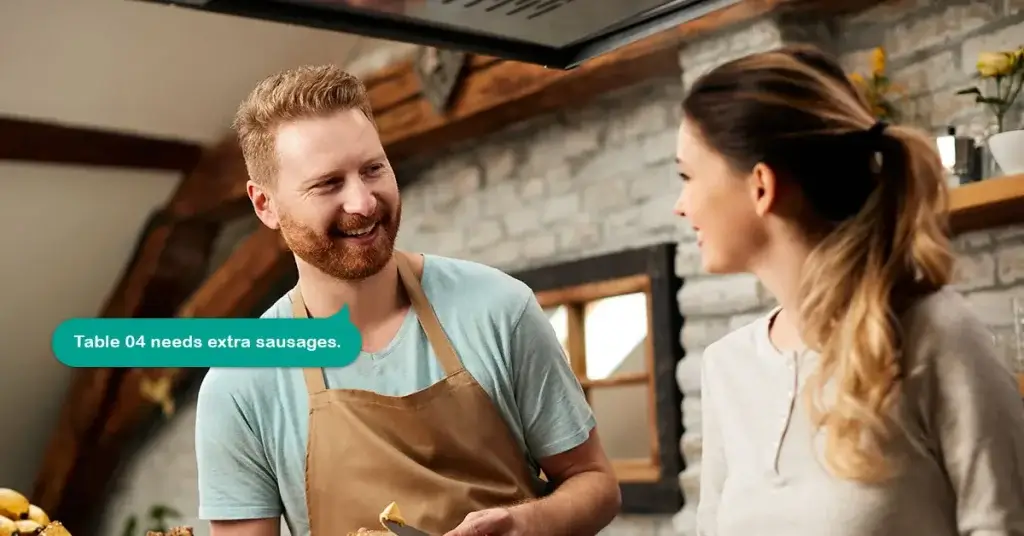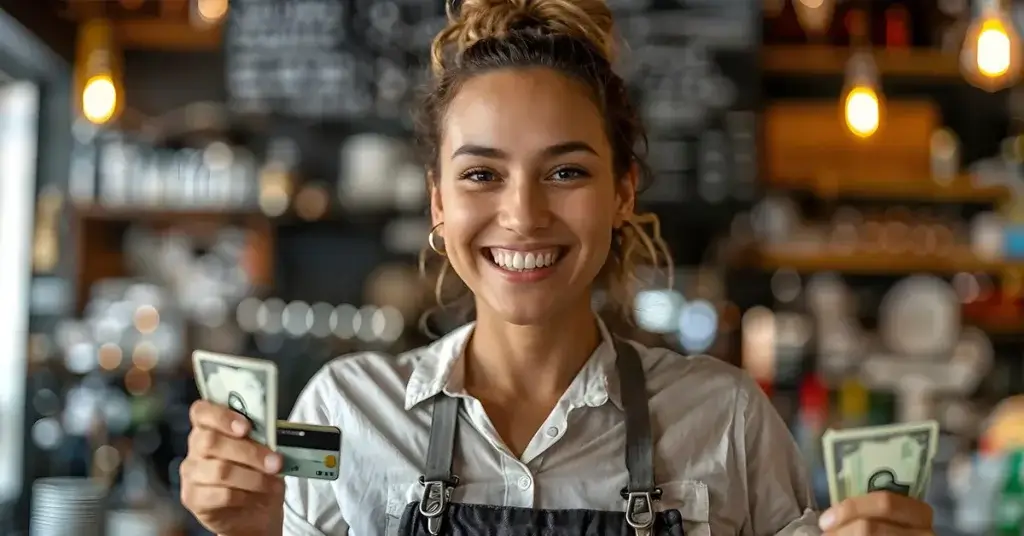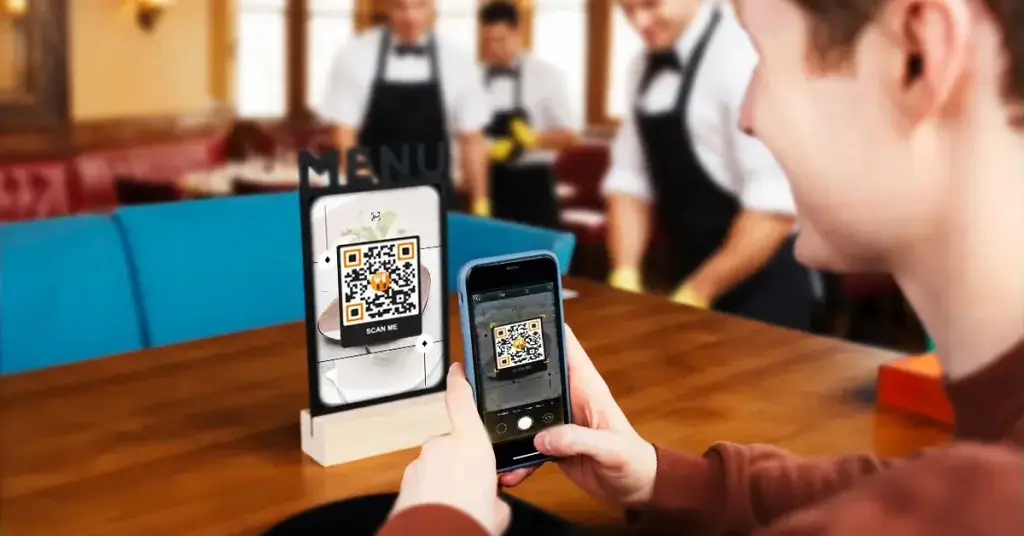
What Is a Busser and Why Are They Important in Restaurants?
Last Updated: June 22, 2025
To have a high-selling restaurant, you need three secret ingredients: delicious food, an aesthetic ambiance, and, above all, excellent customer service.
Let’s say you walk into a beautifully decorated restaurant where the aroma speaks of freshly cooked meals. But as you sit, you notice dirty tables, empty glasses, and leftover crumbs from the previous diners.
Not a pleasant experience, right? This is where the busser comes in.
What is a busser in a restaurant? These front-of-the-house employees keep the dining area clean and organized for the next customer.
Besides, they help restaurants maintain smooth operations, adding quality points to the overall dining (and customer service) experience.
But what is a busser exactly? Read on for an insider guide from an interactive restaurant menu software hub.
Wondering about the busser meaning?
No restaurant team is complete without a busser or dining room assistant. These employees always keep your restaurant clean and hygienic, ensuring the tables look organized for new diners.
Generally, a busser job description vary from one restaurant to another. But it mostly includes picking up leftover crumbs, arrange silverware, and clear tables after every round of guests. They also ensure that the glasses stay full and restrooms remain clean while you’re there.
Many restaurants ask themselves, “How can bussers improve our service?”
The answer is that a busser helps keep a restaurant tidy and welcoming for new (and regular) diners. This lifts much of the burden off your server’s shoulders, leading to a balanced division of labor and satisfied customers.
Having a busser means the servers can focus more on attending to the customer’s needs and less on the physical upkeep of the dining area.
According to ResearchGate, cleanliness is one of the first things diners weigh when thinking about returning to a restaurant. Not only this, 80% of customers state they’d never visit a place that doesn’t have a clean and hygienic restroom.
That’s a lot of lost revenue and revisits for your restaurant!
Having a busser avoids all these issues in your eatery, leaving a positive first (and last) impression on the guests. This keeps the customers coming back for more.

What does a busser do?
Usually, bussers don’t interact with diners one-on-one like servers do. However, they still play a huge role in ensuring guests feel comfortable and welcomed throughout their meal.
An excellent busser keeps an eye on the dining space to refill the glasses as soon as a diner finishes one. If you’re wondering about what is a busser and what they do, here’s the answer:
- Clear dishes, glassware, and silverware after guests have finished their meals.
- Refill bread or condiments when the servers are occupied.
- Sweep floors and wipe down the seats and tables.
- Wash dishes and restock supplies (and ingredients) in the kitchen.
- Arrange napkins, candles, and flowers on the tables.
- Communicate food-related requests to hosts and servers.
- Sanitize restaurant contactless ordering stations.
- Properly dispose of trash and separate recyclables to maintain hygiene.
- Check the restrooms for cleanliness and restock supplies (hand wash and soap).
- Sweep any crumbs or debris from the dining floor and attend to spills.
Does my restaurant need a dining room assistant or busser?

While bussers are not a staple in restaurant operations, those who employ them notice a positive difference in customer experience.
By taking care of cleaning and resetting tables, bussers allow servers to focus more on taking and delivering orders. A busser can also wear a server’s shoes during the busy season when there’s a high guest volume.
During this time, bussers can attend to customer queries, serve delicious meals, and even ask for feedback or send survey for food and service quality at the end of meals.
So, while having a busser isn’t necessary, employing one may help you improve table turnover and customer satisfaction, boosting sales. Now that you know what a busser is, ask yourself these questions to decide if you need one:
- Are my servers overwhelmed?
- Do I usually see tables waiting to be cleared?
- Do I get complaints about cleanliness, risk to restaurant safety, or slow service?
- Is there a huge customer volume on weekends and off days?
- Is my budget sufficient to support hiring bussers?
Skills and qualities of a good busser
A good busser is a combination of physical stamina, attention to detail, and time management skills. They should have a strong work ethic and be passionate about giving guests a smooth and comfortable dining experience.
The ideal candidate should also be good with team working. This is because these employees have to collaborate with servers, kitchen staff, and management to keep the operations running smoothly. Let’s look at what makes an excellent busser.
Physical stamina
Bussing is a physically demanding job. It requires moving tables, lifting heavy trays, and a lot of back and forth between tables and the kitchen.
Ideally, restaurants need a busser with a high physical stamina and endurance for this position. The candidate should be able to maintain high energy levels throughout the day, ensuring they can work without being fatigued.
Communication skills

Being a busser means regularly communicating with the kitchen staff, servers, and sometimes guests. This means you have to communicate well, relaying messages promptly between the restaurant’s staff members.
If a customer reports a foul smell in food, you convey the concern to the kitchen counter. Or if a guest asks for extra mashed potatoes, you let the servers know.
So, when choosing a busser, communication skills should be a priority.
Multitasking and problem-solving
A busser needs to wear multiple hats at once. They have to clean tables to help servers while attending to spills in the background.
Therefore, you need someone who has good multitasking and problem-solving skills. The ideal candidate should know how to think on their feet and find quick solutions to maintain smooth operations.
How much are bussers paid?
Once you know what a busser is and how to hire one, it’s time to set a suitable pay scale.
Research food service industry standards and set up a competitive salary that aligns with them. This will ensure you attract and retain good candidates dedicated to improving your restaurant operations. On average, a busser makes $14.62 per hour in the United States.
This base salary may change depending on where your restaurant is located. Eateries in a high-cost state will have to pay more to hire a busser.
For example, the base wage in Washington, DC, is $18.95 per hour. For California, the amount stands at $17.54 hourly.
Do bussers get tips?

Bussers aren’t normally considered tipped employees. Instead, they get a percentage of tips earned by servers through a process called “tipping out.”
This is when front-of-the-house employees like bartenders and servers divide their tip income with other restaurant staff members at the end of the day.
Afterall, everyone makes an effort for the overall dining experience a customer has.
Keeping this in view, tips should also be received by all employees as an appreciation token for their contribution. That said, the percentage of tipping out is usually pre-set by the employer. It may vary between 5% to 10% of the server’s total tips.
MENU TIGER QR code menu: A busser’s best friend
In a busy restaurant, bussers are often the ones holding it all together. They keep an eye on empty wine glasses, spilled cocktails, and leftover crumbs on the tables, making a huge difference in the overall dining experience and customer service.
However, that still doesn’t mean bussers are superheroes; they may appreciate extra assistance at times.
The digital menu QR code software takes a lot of burden off your bussers, leading to even smoother operations. Let’s find out how these digital menu solutions benefit your eatery.
Streamlining table turnover
One of the main parts of a busser's job description is turning over tables quickly for new guests. According to statistics, restaurants should be able to turn most of their tables in around 45 minutes. This gives you the maximum chance of earning revenue and tips, after which the sales slow down.
The QR code menu by MENU TIGER improves your table turnover rates. It streamlines the entire ordering process, letting customers access, decide, and pay using their smartphones. This means your tables get free quicker, accommodating more guests in the same shift.
Generate good customer feedback

Only 38% of diners state they would wait 15-30 minutes at a restaurant, with the rest normally expecting to receive their meals quicker. With MENU TIGER’s QR code menu, your guests can order and pay as soon as they step in.
This restaurant ordering software leads to less waiting times and higher satisfaction rates. It is also a win for bussers as they can focus on their job without having to attend impatient customers. The result is a smoother service and happier diners.

Reduce busser workload with MENU TIGER software
After learning what is a busser, it is time to reduce the workload on your bussers and enjoy the benefits of QR code menu from MENU TIGER. It cuts down on the time spent ordering, satisfying hungry patrons (and their appetites) quicker. You can also gather customer feedback and incorporate it for a positive consumer experience, attracting revisits to your eatery.
Besides, this interactive restaurant software integrates with your restaurant’s POS and kitchen management systems — directly communicating special requests. So, reduce the risk of errors and let your bussers focus on their job with MENU TIGER today!
FAQs
Belle
Belle Boralo is a seasoned Content Writer specializing in SaaS and marketing content, known for boosting website traffic. Her background in writing essays and journalism and her love for the outdoors infuse her work with a unique and vibrant energy.


